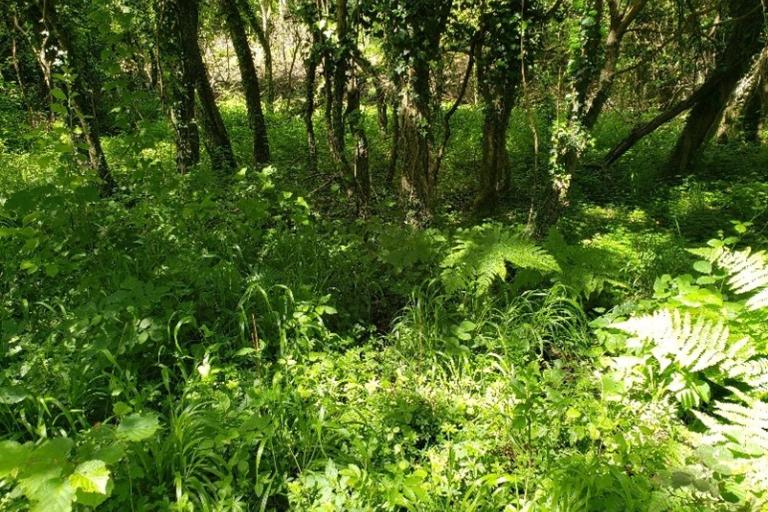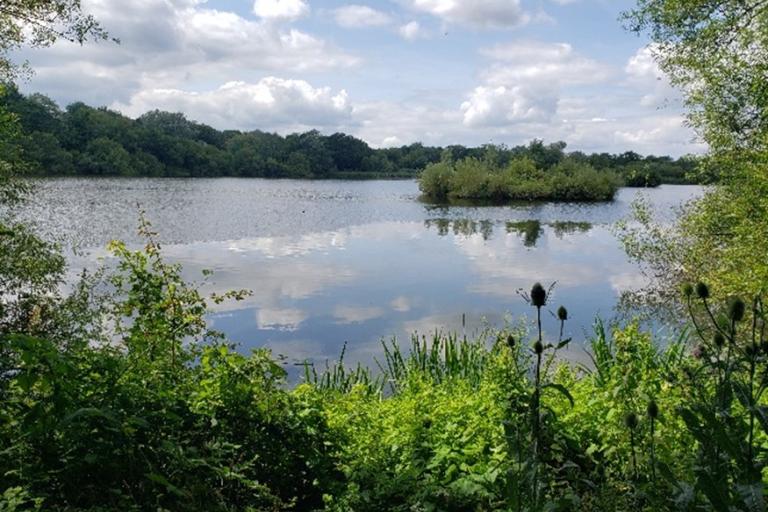by Rob Curtis
This year, the Berkshire Local Wildlife Site (LWS) surveys covered 34 sites, predominantly woodlands, with a mix of dry and wet types. Among these, one site was primarily grassland, another featured wetland, one had significant scrub, and another included heathland elements.
A higher proportion were privately owned than in previous seasons with only about 1/3 accessible to the public. Among these accessible sites were significant locations like the council-owned Dinton Pastures, Maidenhead Thicket (a National Trust site), and Buttersteep Forest, part of the Crown Estate. Not all surveyed sites were full Local Wildlife Sites (LWS); three were proposed LWS, and there were proposed extensions to three other sites.
The survey season kicked off with two council-owned woodlands just west of Reading, both showing clear signs of high public pressure. In contrast, a privately owned woodland in West Berkshire, surveyed soon after, boasted species-rich ground flora with 19 indicator species, including Bluebell, Yellow Archangel, Wood Anemone, Wood-sorrel, Woodruff, Hairy Wood-rush, Moschatel, Pignut, Three-nerved Sandwort and Early Dog-violet.

While many sites showcased a variety of indicator species, some also contained non-native invasives. Himalayan Balsam was prevalent in several wetter sites, Rhododendron dominated the under storey in parts of others, and there were stands of Japanese Knotweed and Giant Hogweed in two sites. Landowners have been informed, and eradication efforts are planned.
Notable sites
Buttersteep Forest, Bracknell: The largest site surveyed, this proposed LWS spans 276 hectares and includes conifer plantations, open heathland (both dry and wet), acid grassland, and ponds. An extensive network of rides and tracks criss-crosses the site. Eleven typical and indicator plants were recorded, including Heather, Tormentil, and Sheep’s Sorrel. Originally proposed for its good numbers of Nightjar and Woodlark, the site continues to support these and other heathland bird species.

Maidenhead Thicket, RBWM: This LWS comprises woodland and scrub with some wide rides. Twenty-five plant indicator species were recorded, including Ramsons, Solomon’s-seal, Sanicle, and Stinking Iris.

Restored Calcareous Grassland, West Berkshire: One of the final sites surveyed, this privately owned proposed LWS includes 23 typical and indicator plant species such as Kidney Vetch, Common Restharrow, Salad Burnet, and Small Scabious.

Dinton Pastures Country Park, managed by Wokingham Borough Council, is a publicly accessible natural haven featuring diverse habitats such as lakes, woodlands with some wetter elements, scrub, grasslands, and swamp fen. Indicator plant species include Wood Melick, Wood-sedge, Reed Canary-grass, Water Mint, and the Summer Snowflake (also known as Loddon Lily).
To support the park's re-designation, faunal records, including breeding birds of the wetland assemblage, will be reviewed. Invertebrate records will also be referred to. Since the site is well recorded by British Entomological and Natural History Society (BENHS) who have been present there since the 1980s.

Faunal Sightings
Faunal sightings included many common birds, a few mammals, a single frog, and no reptiles this time. Invertebrate numbers and species seemed lower, likely due to mixed weather and heavily shaded woodland sites. Buttersteep Forest stood out for rare and indicator bird species, with Woodlark, Tree Pipit, Stonechat, Nightjar, and Firecrest recorded.
As with previous years my thanks goes to my colleagues Katherine and Julie for assisting on one survey. Also, to the landowners for granting me access to undertake the surveys.
I’d encourage anybody recording species on sites in the county to continue this worthy activity. It all adds to the collective knowledge of species distributions. Recent records of faunal indicator species can help designate a site. This is particularly true of the large, publicly accessible sites with a mixture of habitats. Have a look in section 5 of our LWS selection criteria from p.142 to 195 for more details: